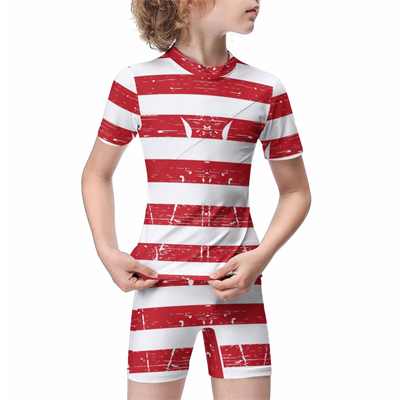Sustainable swimwear choices are a responsible and eco-friendly way to enjoy the beach or pool while minimizing your environmental impact. When selecting sustainable swimwear, consider the following options and practices:
- Eco-Friendly Fabrics: Choose swimwear made from sustainable and environmentally friendly materials, such as:
- Recycled Materials: Look for swimwear brands that use recycled plastics, like recycled polyester or nylon, to create their swimsuits. These materials repurpose plastic waste, reducing its environmental impact.
- Organic Cotton: Organic cotton swimsuits are made from cotton grown without synthetic pesticides or fertilizers, which is better for soil health and water conservation.
- Hemp: Hemp is a sustainable fabric option that requires minimal water and pesticides to grow. It’s durable and biodegradable.
- ECONYL®: ECONYL® is a regenerated nylon fabric made from recycled materials like discarded fishing nets, fabric scraps, and industrial plastic waste.
- Tencel (Lyocell): Tencel is a fabric made from sustainably sourced wood pulp, known for its softness and breathability.
- Certifications: Look for swimwear brands that have sustainability certifications, such as Global Organic Textile Standard (GOTS) or OEKO-TEX Standard 100, which ensure that the materials used meet certain environmental and ethical standards.
- Local and Ethical Production: Support swimwear brands that produce their items locally or in ethical manufacturing facilities. This helps reduce the carbon footprint associated with long-distance shipping and promotes fair labor practices.
- Versatility: Choose timeless and versatile swimwear styles that can be worn for multiple seasons, reducing the need for frequent replacements.
- Quality Over Quantity: Invest in high-quality, durable swimwear that lasts longer and resists wear and tear. This reduces the frequency of replacements and ultimately reduces waste.
- Minimal Packaging: Look for brands that use minimal and eco-friendly packaging for their swimwear. Some brands use recycled or biodegradable packaging materials.
- Secondhand or Vintage: Consider buying secondhand or vintage swimwear. This extends the life of existing garments and reduces the demand for new production.
- Upcycling and Recycling Programs: Some swimwear brands have programs that allow you to return old swimsuits for recycling or upcycling into new products.
- Local Artisans: Support local artisans and independent designers who create handmade swimwear with sustainability in mind. These pieces are often unique and crafted with care.
- Transparency: Look for brands that are transparent about their sustainability practices, including material sourcing, production methods, and ethical labor practices.
- Repair and Maintenance: Take good care of your swimwear by following care instructions and repairing any minor damages to extend their lifespan.
- Dispose Responsibly: When it’s time to retire your old swimwear, dispose of it responsibly. Some materials can be recycled or repurposed, while others may need to be properly discarded.
By making sustainable swimwear choices, you can enjoy the beach or pool with a clear conscience, knowing that you’re contributing to the protection of the environment and supporting brands that prioritize eco-friendly practices.
























